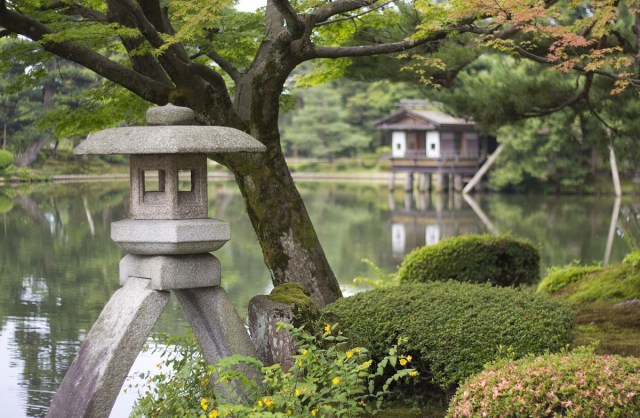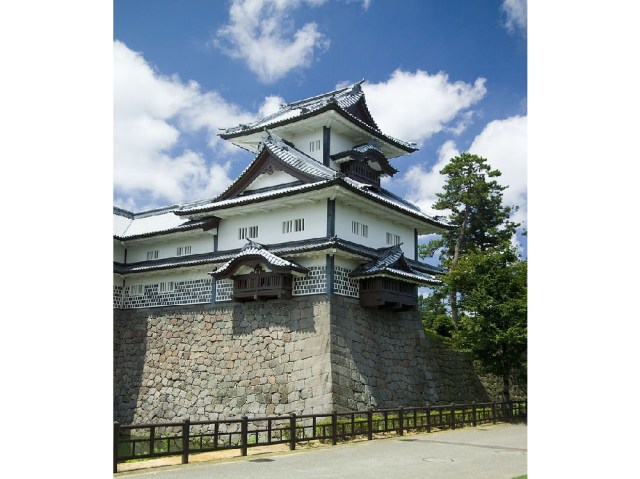
“Don’t come to Noto, but please come to Ishikawa.”
On January 1, a powerful earthquake struck the northern coast of Japan’s main island of Honshu. More than 200 people lost their lives and tens of thousands had to evacuate their homes, with the most extensive damage occurring in Ishikawa Prefecture’s Noto Peninsula.
When earthquakes occur in Japan, rural areas like Noto, where buildings are older and less quake-proofed and there’s less infrastructure surplus than in big cities, tend to be the hardest hit. Unfortunately, many rural communities are heavily reliant on tourism to keep their local economies afloat, and strong earthquakes can create a ripple of averse effects as travelers avoid the region entirely because they’re unaware of what areas they can safely travel to without getting in the way of relief operations.
This is the position Ishikawa finds itself in. The prefecture still wants travelers to visit and support local merchants, restaurants, hotels, and cultural attractions, but to avoid areas where extensive recovery projects are still ongoing. With that in mind, the official Ishikawa Twitter account is asking potential visitors to refer to a map created by animator and Twitter user @natoriyuichiro, which the Ishikawa government says is a proper representation of the situation as of its January 17 endorsement.
【全国のみなさまへ】
— 石川県「もっといしかわ」 (@motto_ishikawa) January 17, 2024
「能登には来ないで」「でも石川県には来て」というお願いで混乱された方がいらっしゃると聞きました。
『石川県外の方に分かりやすい画像』が投稿されていましたので、良かったらご覧ください。
出典@natoriyuichiro#能登を諦めない#がんばろう石川 https://t.co/SIdyqpj74M
“We’ve heard some people are confused over our request of ‘Don’t come to Noto, but please come to Ishikawa,’” the tweet begins. “A map that’s easy for people from outside of Ishikawa to understand has been posted, so please refer to it.”
Within the map, the area outlined in red marks Ishikawa Prefecture. Ishikawa can be broadly divided into two parts, the Noto region (能登地方) to the north and the Kaga Region (加賀地方) to the south, with the city of Kanazawa (金沢), the prefectural capital, as effectively the north border of Kaga.
Noto has a higher ratio of narrow mountain roads, the map explains, many of which have been blocked or damaged by the quake, causing extensive traffic jams in the area. For this reason, use of private cars is not recommended, in order to leave as much of the road network’s capacity for residents, relief staff, and essential workers. The map also subdivides Noto into Northern Noto (能登北部) (also called Inner Noto [奥能登]), and Southern Noto (能登南部), shown by the red and orange areas on the map. Out of the two, Northern Noto has been especially affected by the quake, as the epicenter was off the northern tip of the coastline.
On the other hand, things in the Kaga region, shown in bright green, are pretty much as normal, the map says. Almost all shops and restaurants are keeping to their regular business hours, and sightseeing attractions remain open. The Hokuriku Shinkansen, which connects Tokyo and Kanazawa, is running as normal, flights are arriving and departing regularly at regional air hub Komatsu Airport, and roads remain open to motorists.
▼ Kanazawa Castle is located in the largely unaffected Kaga regions of Ishikawa.
“Please don’t come to Noto yet, but please, definitely, come for sightseeing in Kanazawa and Kaga,” the map’s notes request. They even mention that while Kanazaa is often crowded with tourists, the city is currently light on visitors, so if you’re interested in seeing the city’s historical sites, such as the beautiful Kenrokuen Garden (seen at the top of this article), with smaller crowds while helping the prefecture at a time when tourism revenue is especially critical, now’s your chance.
Source: Twitter/@motto_ishikawa via Hachima Kiko
Top image: Wikipedia/japanexperterna.se
Insert images: Wikipedia/Fg2
● Want to hear about SoraNews24’s latest articles as soon as they’re published? Follow us on Facebook and Twitter!


 New JR Shinkansen-inclusive rail pass is a huge bargain, great way to help out a region in need
New JR Shinkansen-inclusive rail pass is a huge bargain, great way to help out a region in need Japanese town that spent 25 million yen in COVID money on giant squid statue says it paid off big
Japanese town that spent 25 million yen in COVID money on giant squid statue says it paid off big Watch Ishikawa-set anime, support January 1 earthquake relief efforts
Watch Ishikawa-set anime, support January 1 earthquake relief efforts Nintendo’s god-tier customer service continues as they offer free repairs for Noto earthquake victims
Nintendo’s god-tier customer service continues as they offer free repairs for Noto earthquake victims Yoshiki auctions off beloved crystal piano to support Noto Peninsula earthquake victims
Yoshiki auctions off beloved crystal piano to support Noto Peninsula earthquake victims How to order snacks on a Shinkansen bullet train in Japan
How to order snacks on a Shinkansen bullet train in Japan Burger King Japan suddenly adds Dr. Pepper and Dr. Pepper floats to its menu nationwide
Burger King Japan suddenly adds Dr. Pepper and Dr. Pepper floats to its menu nationwide Demon Slayer: Kimetsu no Yaiba gets new roller coaster attractions and food at Universal Studios Japan
Demon Slayer: Kimetsu no Yaiba gets new roller coaster attractions and food at Universal Studios Japan Japan’s new difficult-to-drink-from beer glass protects your liver, but it’s a brutal experience
Japan’s new difficult-to-drink-from beer glass protects your liver, but it’s a brutal experience Hello, cosmetics! Clinique teams up with Hello Kitty this summer for first-time collaboration
Hello, cosmetics! Clinique teams up with Hello Kitty this summer for first-time collaboration Nintendo history you can feel – Super NES, N64, and GameCube controllers become capsule toys
Nintendo history you can feel – Super NES, N64, and GameCube controllers become capsule toys Studio Ghibli releases Ponyo donburi bowl to bring anime ramen to life
Studio Ghibli releases Ponyo donburi bowl to bring anime ramen to life A visit to the best UFO catcher arcade in the universe!
A visit to the best UFO catcher arcade in the universe! New samurai glasses are Japan’s latest weird must-have souvenir
New samurai glasses are Japan’s latest weird must-have souvenir New Japanese banknotes selling online for up to 40 times original value
New Japanese banknotes selling online for up to 40 times original value “The most Delicious Cup Noodle in history” – Japan’s French Cup Noodle wins our heart【Taste test】
“The most Delicious Cup Noodle in history” – Japan’s French Cup Noodle wins our heart【Taste test】 Starbucks releases a cute Frappuccino and Unicorn Cake…but not in Japan
Starbucks releases a cute Frappuccino and Unicorn Cake…but not in Japan Kyoto Tower mascot termination reveals dark side behind cute Japanese characters
Kyoto Tower mascot termination reveals dark side behind cute Japanese characters McDonald’s Japan’s Soft Twist Tower: A phantom ice cream only sold at select branches
McDonald’s Japan’s Soft Twist Tower: A phantom ice cream only sold at select branches Yabai Ramen: What makes this Japanese ramen so dangerous?
Yabai Ramen: What makes this Japanese ramen so dangerous? Finally! Nintendo Japan expands Switch 8-bit controller sales to everybody, Online member or not
Finally! Nintendo Japan expands Switch 8-bit controller sales to everybody, Online member or not Japanese government wants to build luxury resorts in all national parks for foreign tourists
Japanese government wants to build luxury resorts in all national parks for foreign tourists To combat declining birth rate, Japan to begin offering “Breeding Visas” to foreigners
To combat declining birth rate, Japan to begin offering “Breeding Visas” to foreigners 10 things you should buy at 7-Eleven in Japan
10 things you should buy at 7-Eleven in Japan Studio Ghibli releases anime heroine cosplay dresses that are super comfy to wear
Studio Ghibli releases anime heroine cosplay dresses that are super comfy to wear Woman charged for driving suitcase without a license in Osaka
Woman charged for driving suitcase without a license in Osaka Studio Ghibli unveils My Neighbour Totoro miniature house model
Studio Ghibli unveils My Neighbour Totoro miniature house model Kyoto experiencing problems with foreign tourists not paying for bus fares, but not on purpose
Kyoto experiencing problems with foreign tourists not paying for bus fares, but not on purpose Fighting mild hunger with a Japanese soda that turns into jelly in the stomach【Taste test】
Fighting mild hunger with a Japanese soda that turns into jelly in the stomach【Taste test】 Studio Ghibli’s Howl’s Moving Castle tapestry unveiled in Japan for first time
Studio Ghibli’s Howl’s Moving Castle tapestry unveiled in Japan for first time McDonald’s new Happy Meals offer up cute and practical Sanrio lifestyle goods
McDonald’s new Happy Meals offer up cute and practical Sanrio lifestyle goods Sales of Japan’s most convenient train ticket/shopping payment cards suspended indefinitely
Sales of Japan’s most convenient train ticket/shopping payment cards suspended indefinitely Sold-out Studio Ghibli desktop humidifiers are back so Totoro can help you through the dry season
Sold-out Studio Ghibli desktop humidifiers are back so Totoro can help you through the dry season Japanese government to make first change to romanization spelling rules since the 1950s
Japanese government to make first change to romanization spelling rules since the 1950s Foreigner’s request for help in Tokyo makes us sad for the state of society
Foreigner’s request for help in Tokyo makes us sad for the state of society Ghibli founders Toshio Suzuki and Hayao Miyazaki contribute to Japanese whisky Totoro label design
Ghibli founders Toshio Suzuki and Hayao Miyazaki contribute to Japanese whisky Totoro label design Doraemon found buried at sea as scene from 1993 anime becomes real life【Photos】
Doraemon found buried at sea as scene from 1993 anime becomes real life【Photos】 Tokyo’s most famous Starbucks is closed
Tokyo’s most famous Starbucks is closed Princesses, fruits, and blacksmiths: Study reveals the 30 most unusual family names in Japan
Princesses, fruits, and blacksmiths: Study reveals the 30 most unusual family names in Japan Amazing views of the solar storm aurora from Japan【Photos, videos】
Amazing views of the solar storm aurora from Japan【Photos, videos】 Ishikawa latest prefecture to join those with Pokémon manhole lids across Japan
Ishikawa latest prefecture to join those with Pokémon manhole lids across Japan Quiz time! How many of these photos of Japanese places can you identify?【Photos】
Quiz time! How many of these photos of Japanese places can you identify?【Photos】 Come buy the SoraNews24 lucky bag and help support a good cause at Subculture Festival
Come buy the SoraNews24 lucky bag and help support a good cause at Subculture Festival Osaka earthquake: Scenes show damage from strongest tremor to hit the region in decades
Osaka earthquake: Scenes show damage from strongest tremor to hit the region in decades Learn all about enjoying a traditional Japanese-style ryokan inn from this nine-minute video!
Learn all about enjoying a traditional Japanese-style ryokan inn from this nine-minute video! This hidden restaurant has amazing views of Tokyo Tower and nothing on the menu is over 10 bucks
This hidden restaurant has amazing views of Tokyo Tower and nothing on the menu is over 10 bucks Why does Japan have so many overhead power lines?
Why does Japan have so many overhead power lines? Need a place to stay in Japan? These share houses have discounts for newly arrived foreigners
Need a place to stay in Japan? These share houses have discounts for newly arrived foreigners Osaka earthquake hits city during peak hour, passengers freed after trains suspended
Osaka earthquake hits city during peak hour, passengers freed after trains suspended Foreign passenger shoves conductor on one of the last full runs for Japan’s Thunderbird train
Foreign passenger shoves conductor on one of the last full runs for Japan’s Thunderbird train Kanazawa Curry Cola lets you have your fried pork and curry on the go!
Kanazawa Curry Cola lets you have your fried pork and curry on the go! Seven years after earthquake, Fukushima teen says March 11 is an “ordinary day” in the prefecture
Seven years after earthquake, Fukushima teen says March 11 is an “ordinary day” in the prefecture Beautiful new luxury train for Ishikawa dazzles with gold leaf and lacquer interior
Beautiful new luxury train for Ishikawa dazzles with gold leaf and lacquer interior Japanese hot spring will wrap your face in gold leaf for the ultimate luxury facial
Japanese hot spring will wrap your face in gold leaf for the ultimate luxury facial Should you dip your egg sushi in soy sauce before you eat it? Survey asks Japanese diners
Should you dip your egg sushi in soy sauce before you eat it? Survey asks Japanese diners
Leave a Reply